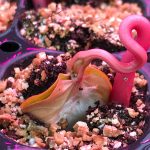Companion Planting is a system of pairing plants together. Some plants are great neighbours and mutually beneficial to one another, and others are not.
Companion Planting is more of an art than a science and tends to be based on anecdotal information rather than purely scientific data. Scientifically testing plant relationships is challenging because of the difficulty in singling out one factor to test. There are many uncontrollable factors that affect plant growth like hours of sunshine, rainfall, wind, soil conditions and quality.
Beneficial Plant Relationships can Look Like:

- Protection from Pests or Diseases
- This happens where one type of plant is unappealing to an insect and the insect will give that plant a wide berth resulting in the protection of a susceptible plant.
- Soil Benefits
- Some plants add nitrogen to the soil and others deplete it. By pairing the two together, the nitrogen fixer supports the heavy feeder.
- Physical Protection
- Some plants can shield others from the sun by providing shade, and others can act as a trellis for climbing plants.
Detrimental Plant Relationships can Look Like:

- Blocking sunlight to another plant.
- Attracting insects and diseases to an area.
- Feeding on the same nutrients and depleting the soil.
Take a look at at my online store and download the Vegetable Companion Planting Chart and use it to help plan your vegetable gardens this spring!
For a more in-depth discussion on Companion Planting, check out The Ultimate Vegetable Companion Planting Guide from A-Z [+Chart].
© Sharon Wallish Murphy, Gardening with Sharon






























